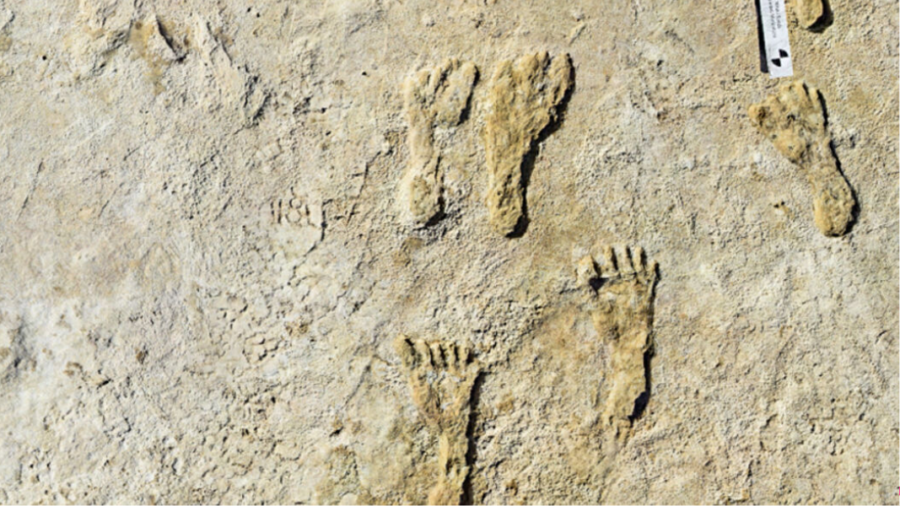New evidence of human life
In White Sands National Park, New Mexico, a new archaeological discovery is changing scientists’ view of human life in North America. Researchers from three universities, the National Park Service, and the U.S. Geological Survey uncovered human footprints from over 20,000 years ago near a shallow lake reservoir in the park.
The lake where the footprints were made dried up thousands of years ago, and sediment filled in and buried the prints. Recent erosion exposed them, but it also has the potential to make newly discovered prints vanish within months or years.
Using radiocarbon dating of the rock, the scientists estimated that the footprints are between 21,000 and 23,000 years old. Before the discovery, the oldest signs of human life in North America dated back to about 16,000 years ago.
Based on this prior evidence, scientists used to believe that humans from North Asia traveled to North America through a land bridge during the last ice age. Some believed that humans arrived on the continent earlier because tools found on the continent were dated to be older, but scientists were unsure of whether the rocks were actual tools or just resembled them by coincidence.
The footprints are “the first unequivocal evidence of a sustained human presence in the Americas thousands of years earlier than most archaeologists thought was likely,” said Thomas Urban, a research scientist at Cornell University. Urban developed the non-invasive techniques that the archaeologists used to investigate the site.
This new discovery indicates that there were previous great migrations of humans that scientists did not know about before, and that these groups may have gone extinct before more humans traveled to North America thousands of years later.
The footprints are not just groundbreaking due to their age, but also because of the insight they give into human life tens of thousands of years ago. Most of the footprints belong to teenagers and young children and also show some interaction with adults. Although researchers are not certain of what the teenagers were doing, it is possible that they were participating in a custom called a buffalo jump.
“We can think of our ancestors as quite functional, hunting and surviving, but what we see here is also activity of play, and of different ages coming together. A true insight into these early people,” said Matthew Bennett, one of the paper’s authors and a leader in the study.
Bennett and his colleagues also found the tracks of multiple now-extinct species, including mammoths, dire wolves, and giant ground sloths, alongside the human ones.





